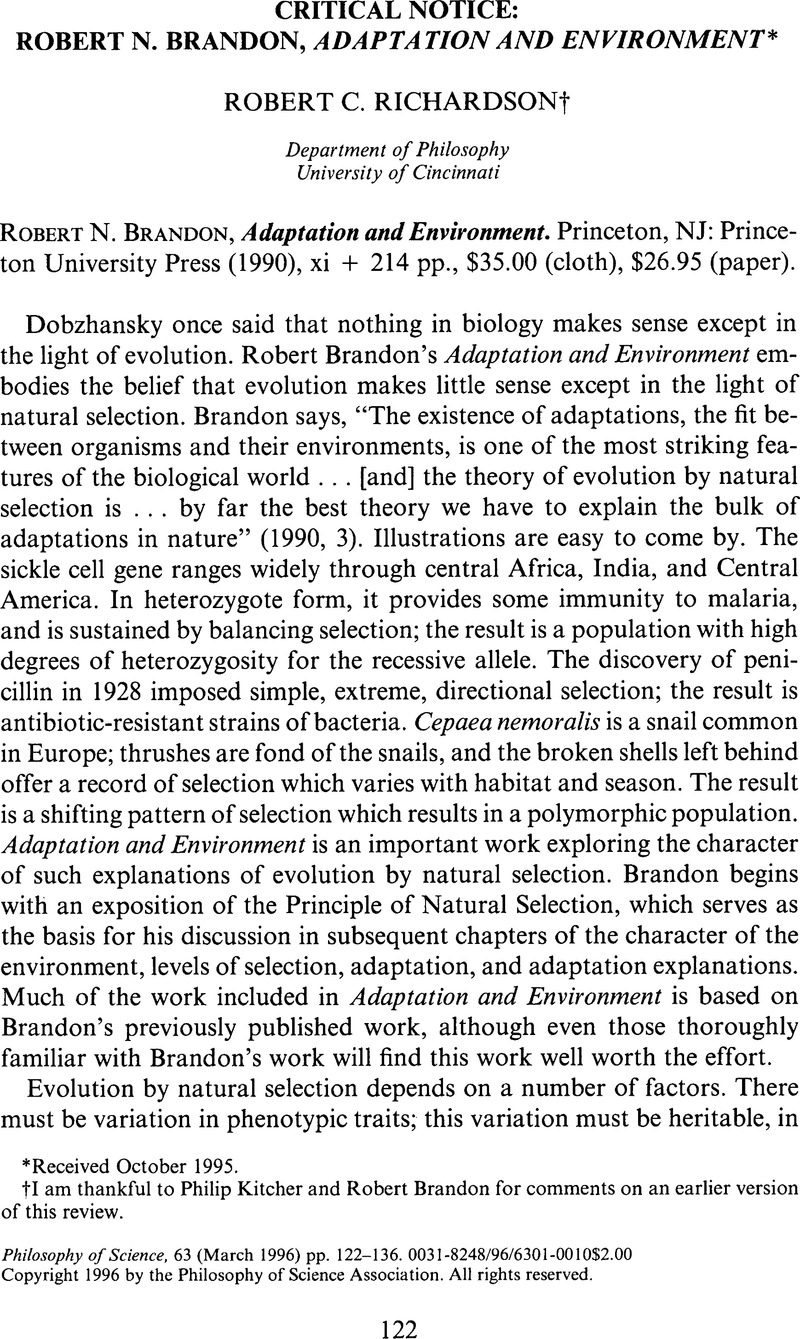Crossref Citations
This article has been cited by the following publications. This list is generated based on data provided by Crossref.
De Jong, H. Looren
and
Van Der Steen, W. J.
1998.
Biological thinking in evolutionary psychology: Rockbottom or quicksand?.
Philosophical Psychology,
Vol. 11,
Issue. 2,
p.
183.
van der Steen, Wim J.
2005.
Current Themes in Theoretical Biology.
p.
71.
Richardson, Robert C.
2007.
Philosophy of Psychology and Cognitive Science.
p.
369.
Jeler, Ciprian
2017.
Multi-level selection and the issue of environmental homogeneity.
Biology & Philosophy,
Vol. 32,
Issue. 5,
p.
651.
Mayne, Zachary J.
2023.
The conceptual foundation of the propensity interpretation of fitness.
Synthese,
Vol. 203,
Issue. 1,



